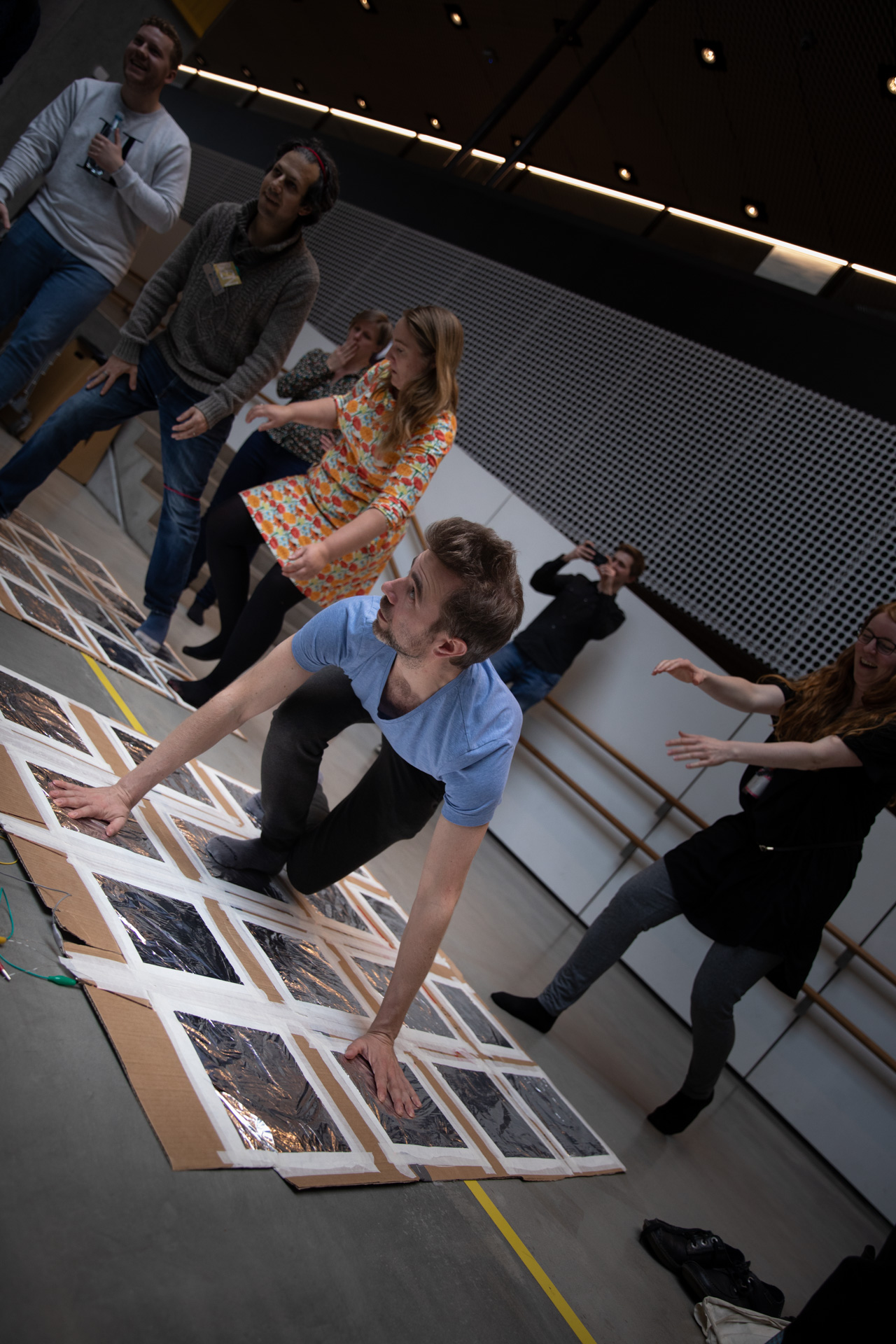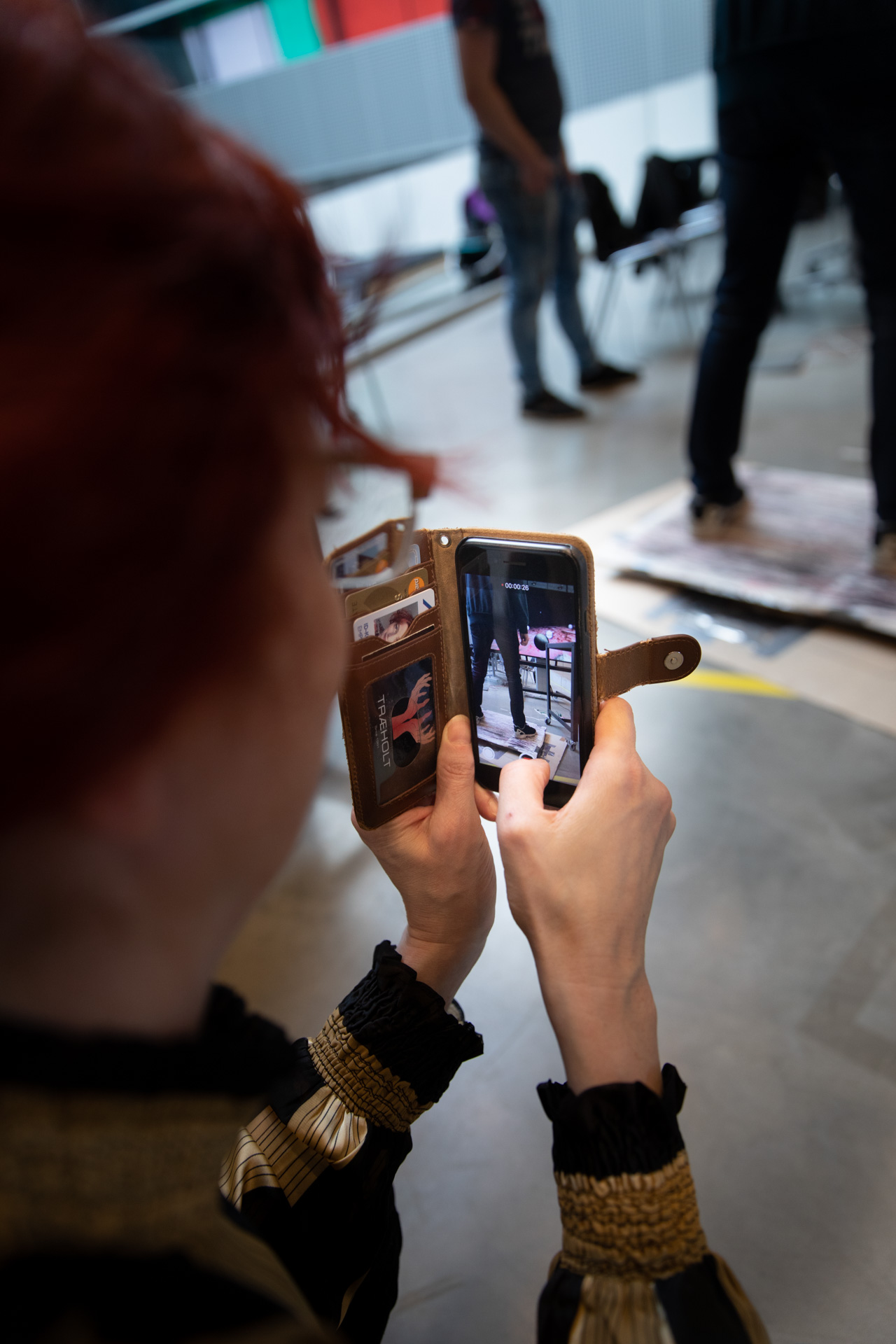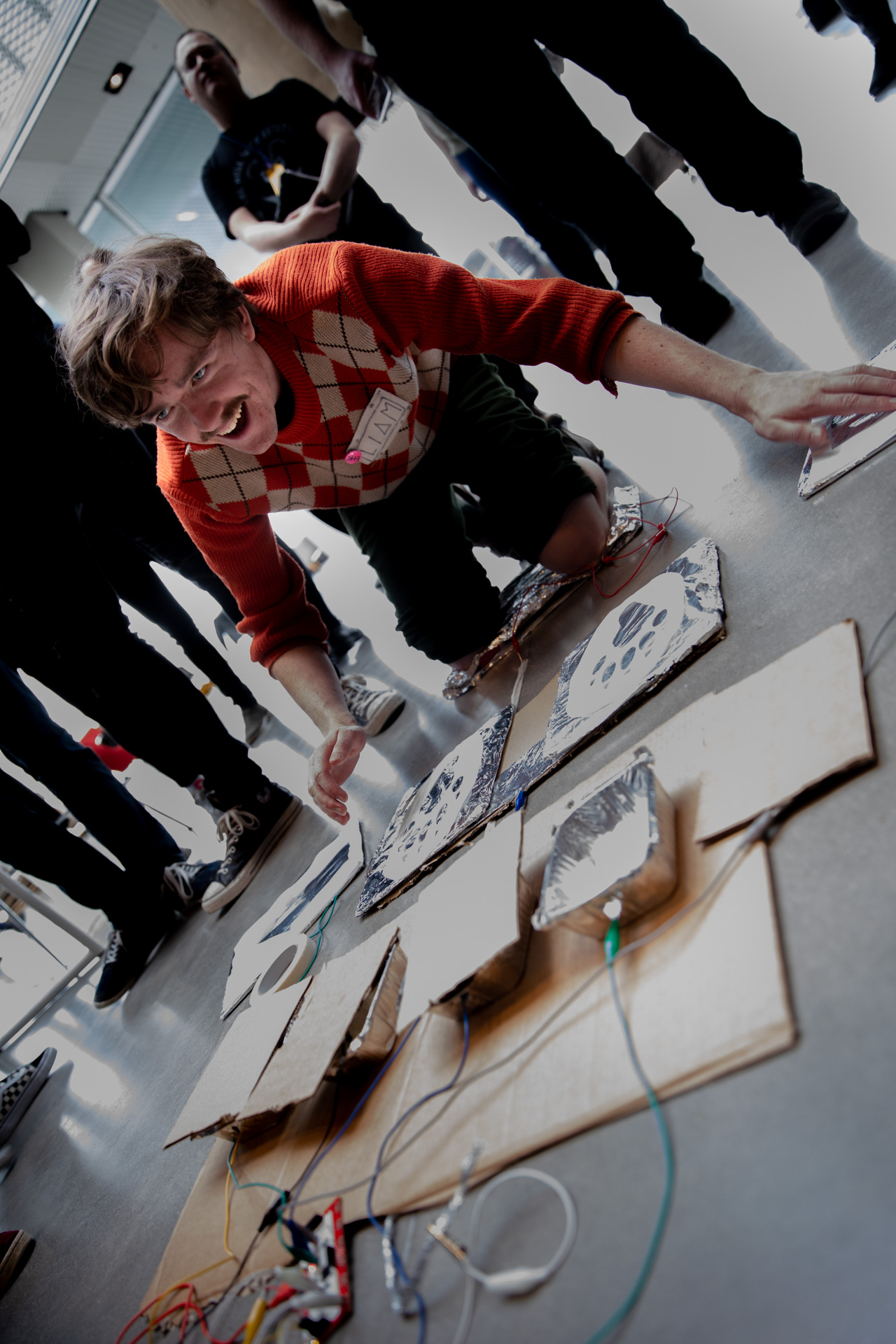Unit III: Game jamming in and with the public
This lesson will give you insight into how game design and game jams can be utilised as a format for students to work within and with cultural organisations and the creative industries. The videos and pictures in this unit demonstrate the process of making games for a cultural organisation, in this case the public library in Aarhus, Dokk1, and in collaboration with the creative industries, here Coding Pirates Aarhus. In this unit you will see how MA students from both Arts and Sciences at Aarhus University, students from Game College, Grenaa and volunteers and professionals from Coding Pirates Aarhus worked together to create innovative and transformative game experiences for Dokk1 in Aarhus. The game design process was in the form of a two-day game jam where participants from all three contexts worked together in cross-functional teams (thinkers, coders, makers) to create a game for Dokk1. The two-day game jam ended with game pitches and a game exhibition in the open space of the library, where everyone interested where invited to listen to the academic presentations, try out their games and discuss the game concept and experience with the teams. The event was attended by other university students, academics within higher education, professionals from the creative industries, librarians as well as families and visitors at Dokk1.
In the first part we will see how Associate Professor Rikke Toft Nørgård and Associate Professor Claus Toft-Nielsen opened the game jam at the public library Dokk1 in Aarhus and asked teams of MA students from Aarhus University, students from Game College, Grenaa and volunteers and professionals from Coding Pirates Aarhus to create games that took games and the gameplay experience ‘to the edge’. We will ask ourselves how can we create new forms of games and new types of gaming experiences for public spaces, cultural institutions or specific disciplines through combining academic thinking with game design processes? This introduction is then followed by a presentation from PhD Fellow Jeanette Falk Olesen who is doing a PhD project on game jams and game design processes. Here, she talks about different game jam formats and what you can learn and take away from game jams. Lastly, Chair of Coding Pirates Aarhus, Mikey Bruun Andersen, introduces to the practice of creating games through game jams and how game jams connects to the double diamond design process model.
The second part of the unit consists of the design teams presentations of their game concepts. The five groups presents their game thinking, game making and game design in short presentations as examples of how you concretely can create innovative games or gaming experiences for public spaces, cultural institutions or specific disciplines through short 12-hour game jams. The second part begins with the opening of the design teams presentations by Associate Professor Claus Toft-Nielsen and Associate Professor Rikke Toft Nørgård.
In the last part of this unit you will get the opportunity to create your own game for change by introducing you to some resources and examples that will support your thinking and help you to design games that create value and change. The unit is concluded with a short recap of the double diamond design model and game jam process from Unit II that will take you through the exercise. After completing the lesson you will know, through students’ own projects and examples, how you can work with games and game jam projects through applying both scholarly and designerly methods and practices.
 |
In the first part we will see how Associate Professor Rikke Toft Nørgård and Associate Professor Claus Toft-Nielsen opened the game jam at the public library Dokk1 in Aarhus and asked teams of MA students from Aarhus University, students from Game College, Grenaa and volunteers and professionals from Coding Pirates Aarhus to create games that took games and the gameplay experience ‘to the edge’. We will ask ourselves how can we create new forms of games and new types of gaming experiences for public spaces, cultural institutions or specific disciplines through combining academic thinking with game design processes? This introduction is then followed by a presentation from PhD Fellow Jeanette Falk Olesen who is doing a PhD project on game jams and game design processes. Here, she talks about different game jam formats and what you can learn and take away from game jams. Lastly, Chair of Coding Pirates Aarhus, Mikey Bruun Andersen, introduces to the practice of creating games through game jams and how game jams connects to the double diamond design process model.
The second part of the unit consists of the design teams presentations of their game concepts. The five groups presents their game thinking, game making and game design in short presentations as examples of how you concretely can create innovative games or gaming experiences for public spaces, cultural institutions or specific disciplines through short 12-hour game jams. The second part begins with the opening of the design teams presentations by Associate Professor Claus Toft-Nielsen and Associate Professor Rikke Toft Nørgård.
In the last part of this unit you will get the opportunity to create your own game for change by introducing you to some resources and examples that will support your thinking and help you to design games that create value and change. The unit is concluded with a short recap of the double diamond design model and game jam process from Unit II that will take you through the exercise. After completing the lesson you will know, through students’ own projects and examples, how you can work with games and game jam projects through applying both scholarly and designerly methods and practices.



